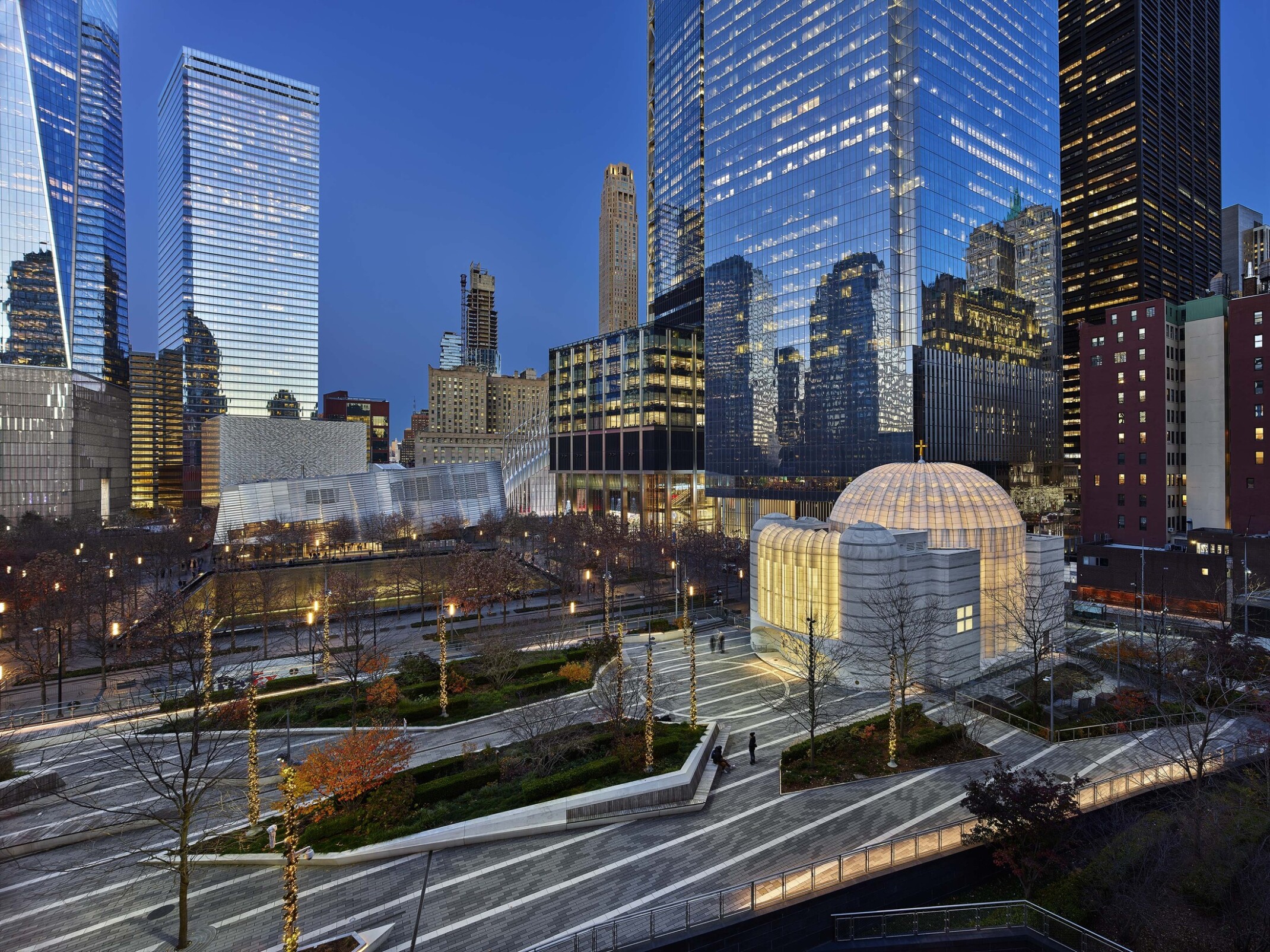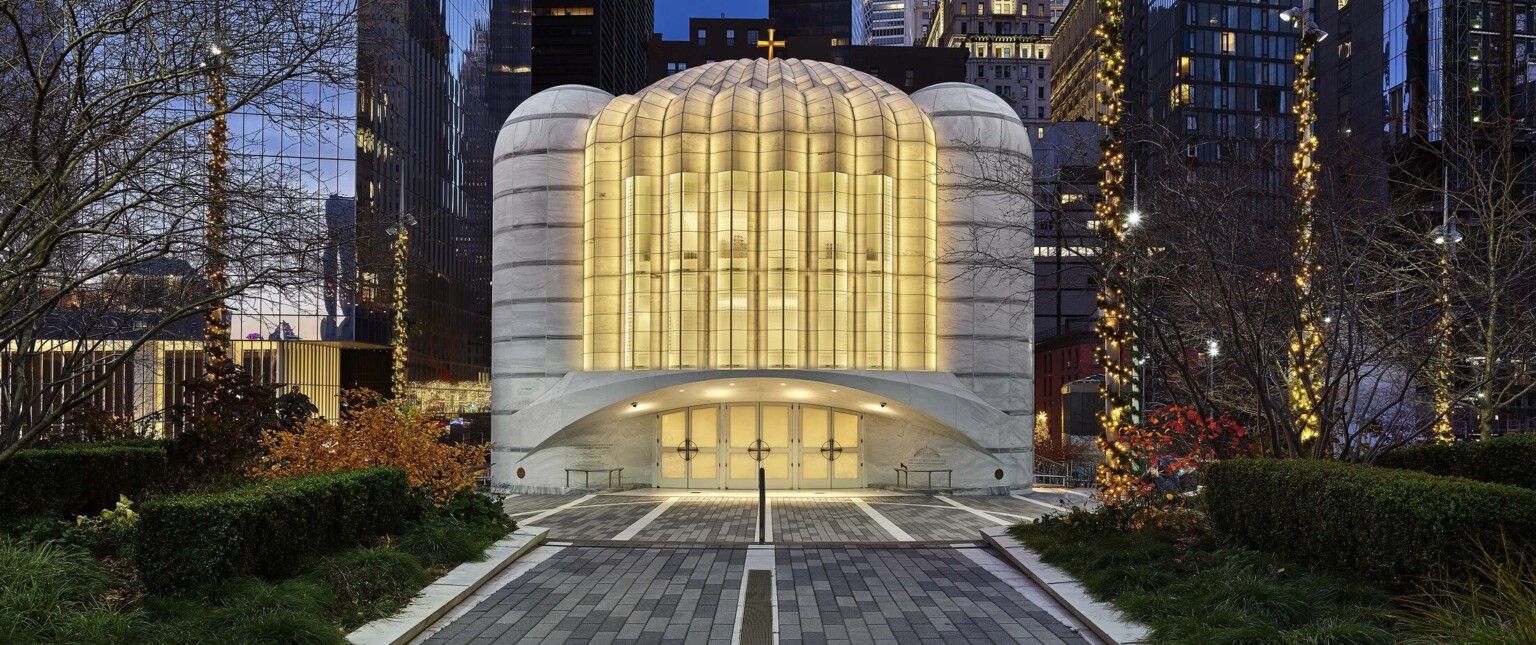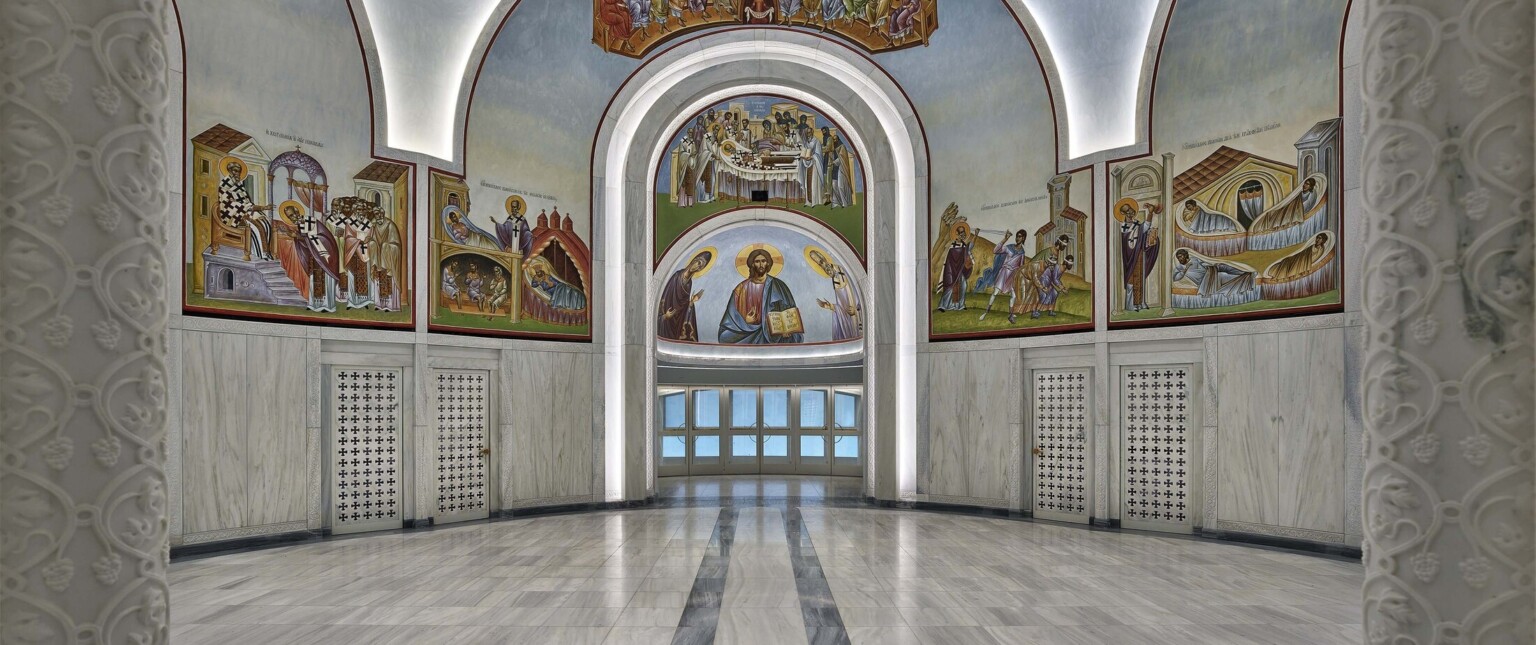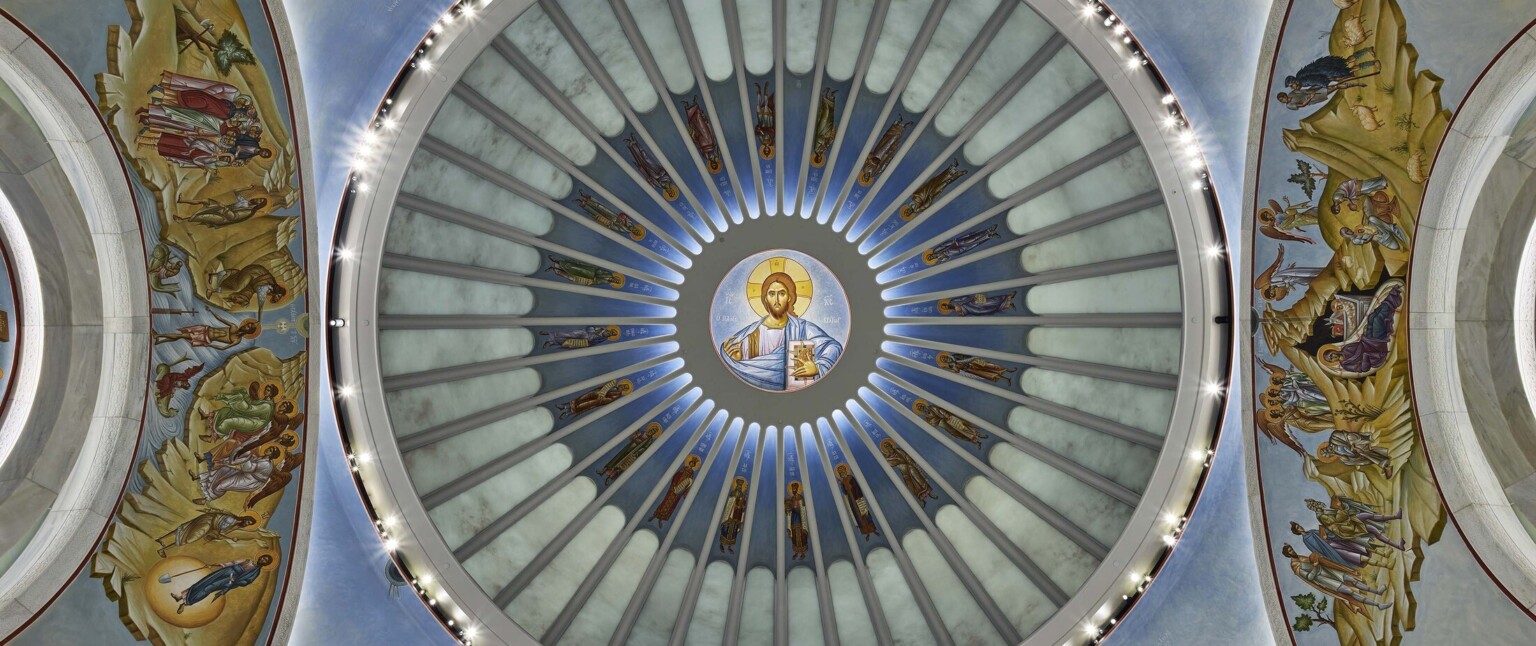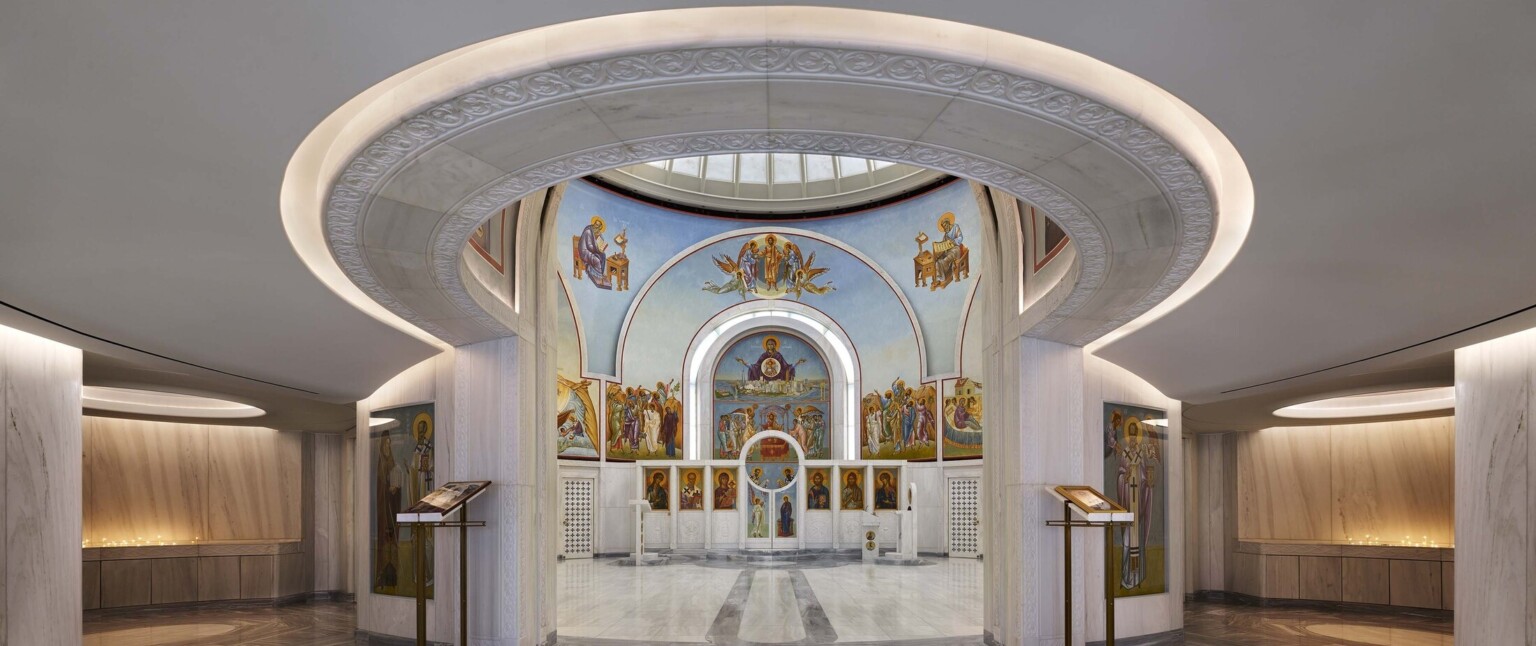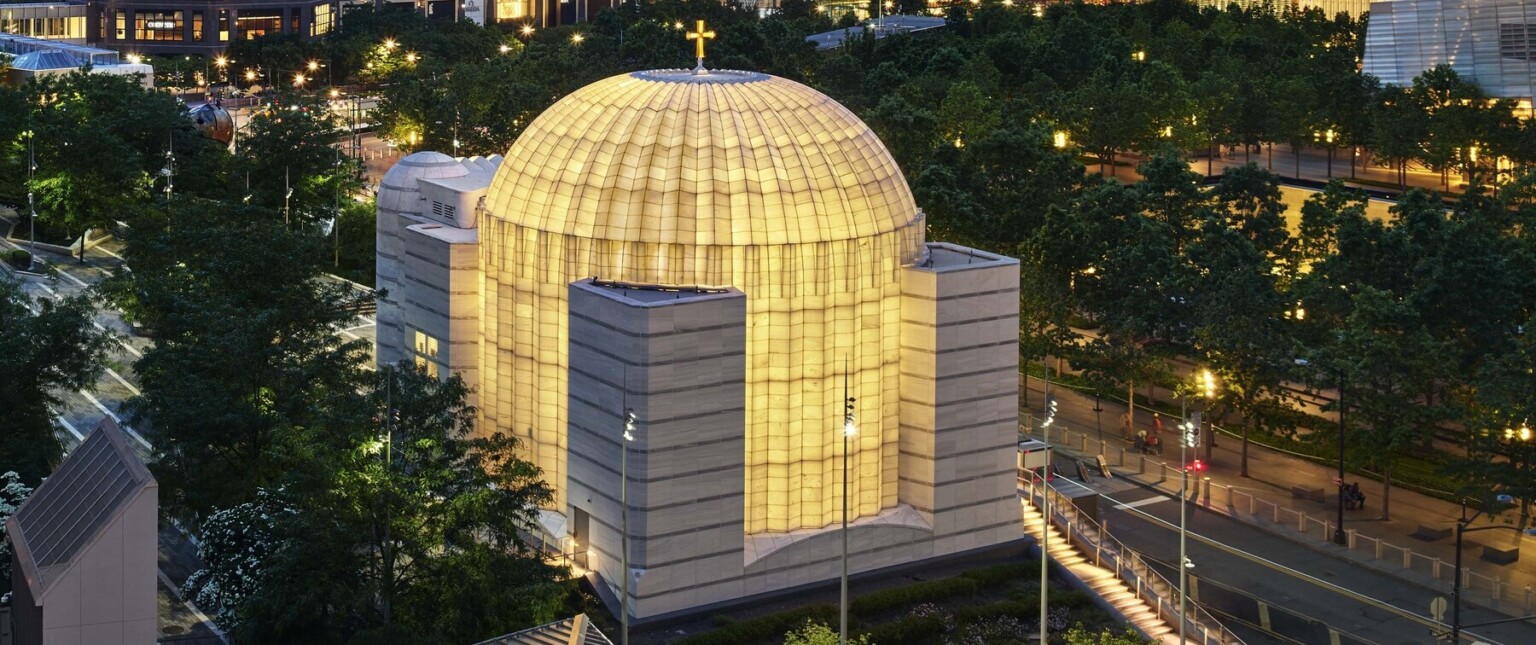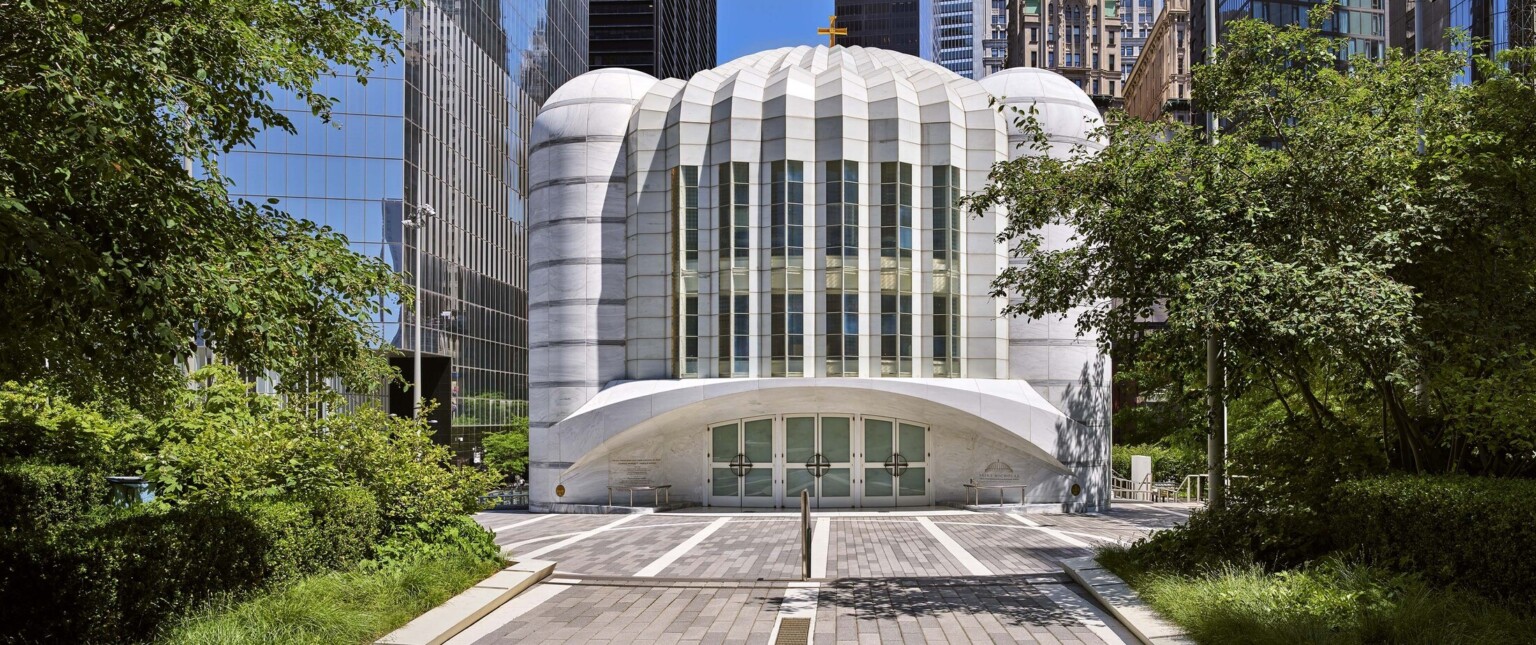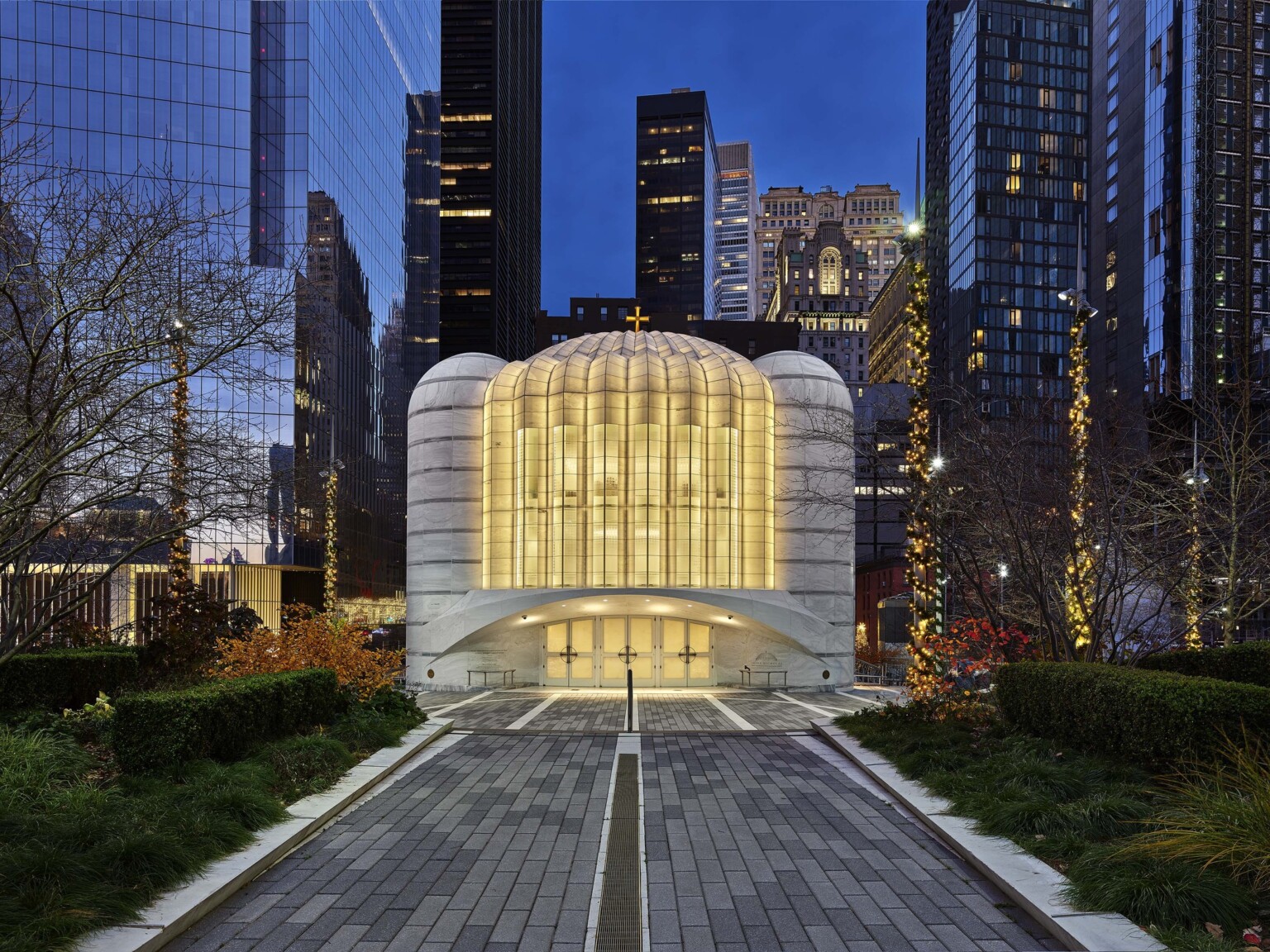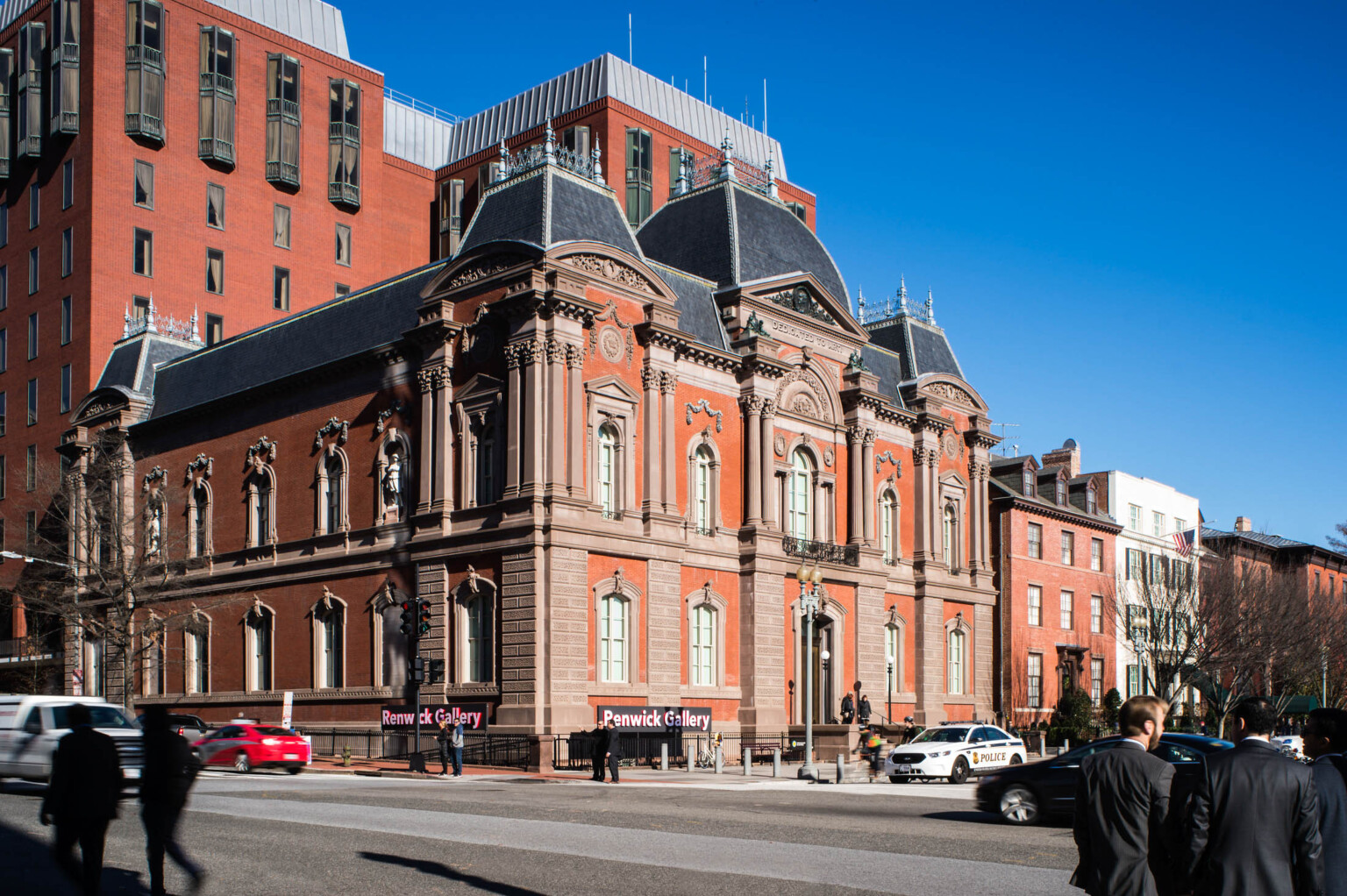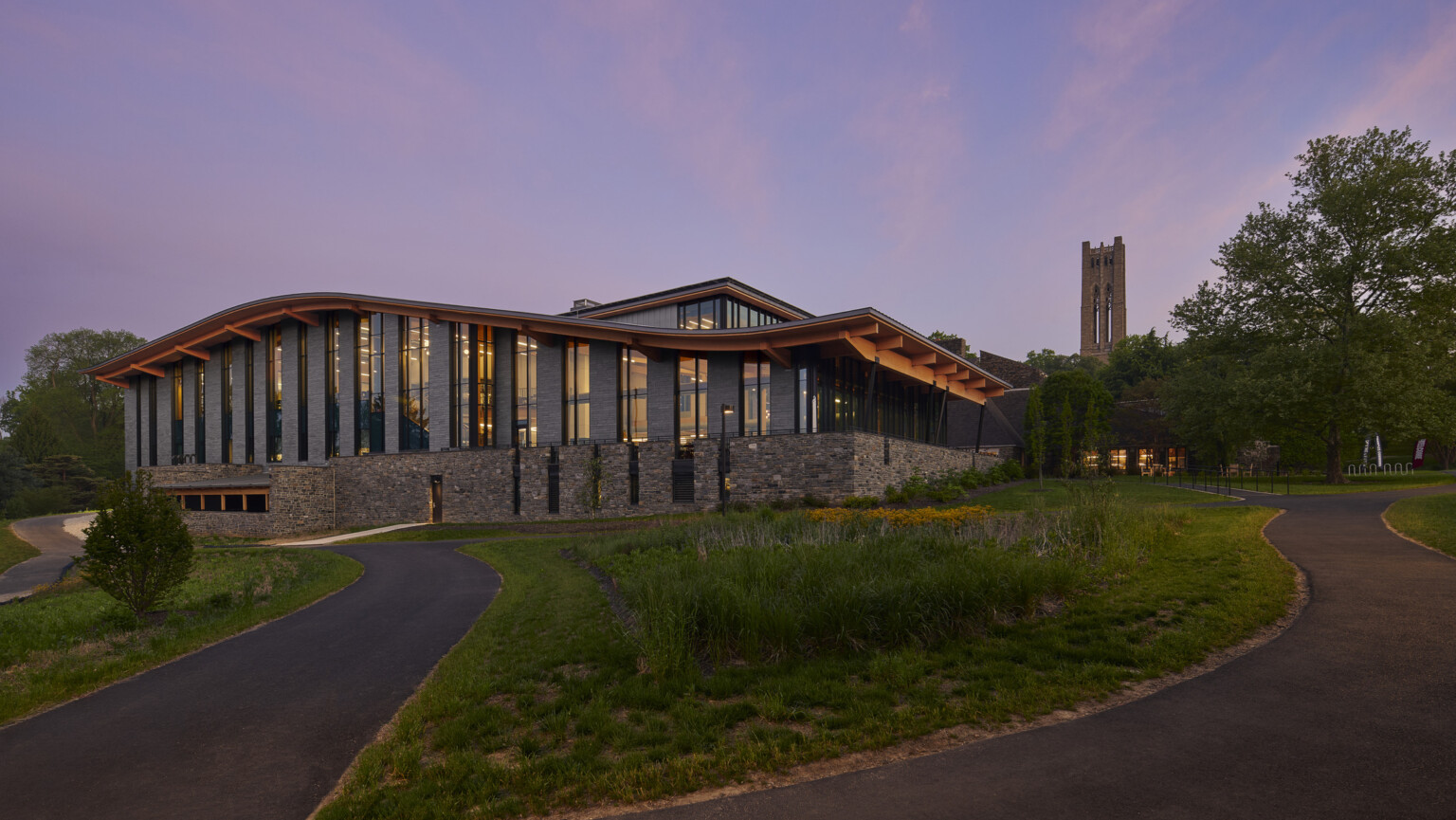September 11, 2001 changed so much for so many, and for the Greek Orthodox community in lower Manhattan their church was destroyed when the south tower fell. From the ashes, the new St. Nicholas Greek Orthodox Church and National Shrine designed by Santiago Calatrava was constructed overlooking Ground Zero.
Our lighting design for the church transforms what appears as a solid stone church by day into a luminous beacon of light and hope at night, thus achieving the Archbishop’s goal that the church appears “to be lit from 10,000 candles”.
The design’s “envelope of light” also provides a diffuse ambient glow of light, as well as strategic architectural accent lighting, into the church interior. Within this soft ambient frame of light, the Greek iconography within (by the most prominent iconographers from Mt. Athos in Greece) and the various ceremonial positions within the nave are each individually highlighted. Within the Greek Orthodox religion light is a symbol of the restorative powers of the faith, and the lighting design for the St. Nicholas Greek Orthodox Church and National Shrine helps restore what the community lost on September 11, while ensuring an even brighter and lasting future for the community.
The scope of lighting design work included the exterior and all spaces within the 12,000-SF church, including lobby, prayer rooms, a community room, bereavement rooms, offices and a gift shop. The team developed a unique modular lighting system mounted on the rainscreen structure directed inward to reflect off the building’s diffusing white thermal envelope to create an even, shadow-free surface of light emanating outward through the rainscreen. The development of the rainscreen composition of glass and Pentelic marble (quarried from the same quarry that the Parthenon in Athens was built from) was directly informed by the lighting design to provide an even exterior surface of light while also accentuating the warm irregular veins within the marble. This same light filters into the interior where it is balanced with a fully adjustable and controllable museum-grade LED lighting system, highly integrated within the architecture. The color temperature and relative brightness of all light sources are carefully designed and controlled to ensure a singular and cohesive effect for the building. In this way, the holistic use of external and internal lighting sources provides the church with a highly varied and differentiated effect, as well as optimal flexibility of lighting for the full range of church services during the daytime and evening.
 Metropolis
Metropolis
